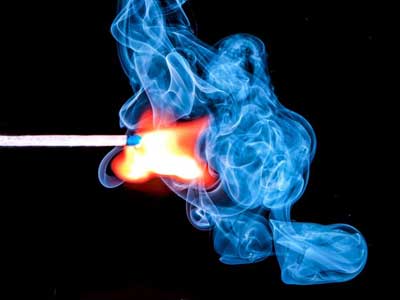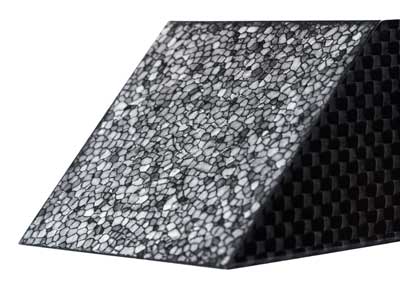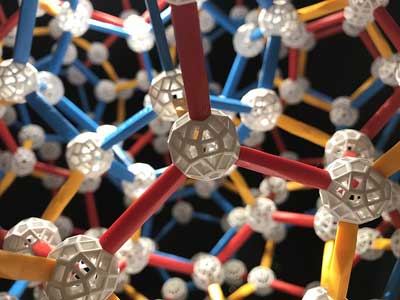SunForce™ – A Foam With High Thermal Resistance.
The extent to which functionality can be maintained when the material is at high temperature is a very important point in use. Good heat resistance is required for the material itself if it is to be used safely in environments subject to increases in temperature. The raw material of SunForce is modified polyphenylene ether (mPPE), an engineering plastic with superior heat resistance compared to other plastics, and it inherits these characteristics to provide superior heat resistance compared to conventional foamed plastics.
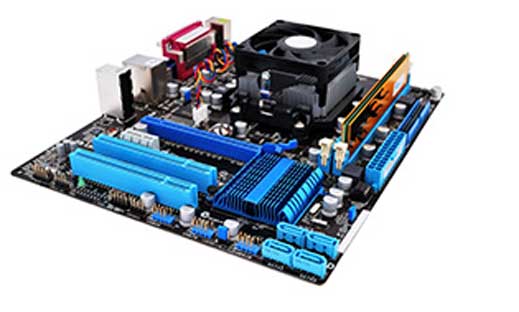
Temperature At Which Deflection Occurs Under Load
The temperature at which a given deflection occurs when a given load is applied to the material. The following values were obtained for each foaming ratio when SunForce samples were measured under load while supported at both ends (see diagram right). These are general reference values for use under short-term heating conditions.
1
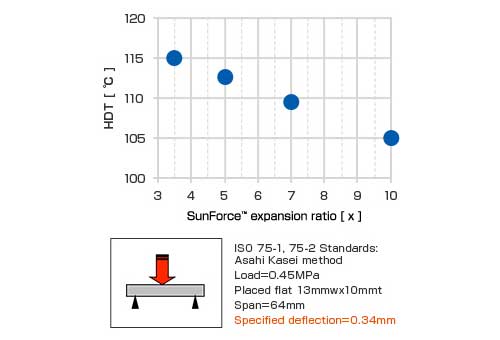
2
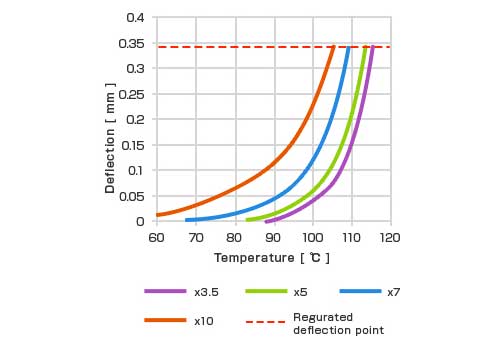
Rigidity Under Temperature
The change in deflection under temperature. The change in strength under temperature is an important point for the actual use of the material. SunForce is a non-crystalline particle foam. Its glass transition temperature is therefore higher than for crystalline plastics, and it maintains its strength at a relatively high rate even at high temperatures. As with deflection temperature under load, the graph on left provides a reference for use at high temperatures and stresses.
While rigidity at high temperature is important, rigidity at low temperatures is also important for use in colder climates etc. SunForce can be used without major deterioration in rigidity even at temperatures below freezing point.
Ratio Of Shrinkage Under Temperature
The graph on right shows the extent of shrinkage and change in volume of the foam without a load applied. The change in volume of a SunForce sample (x7 foaming ratio) left at 100ºC for 22 hours is 1% or less. A reference value particularly useful in cases in which SunForce is installed and used without application of stress. Measurement method ratio of change in dimensions with heating: JIS K 6767 standard. After heating at a prescribed temperature for 22 hours, the sample was removed and left under standard conditions at the test location for one hour, and the change in dimensions then measured.
3
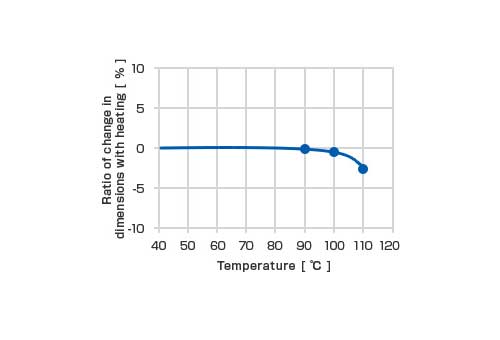
4
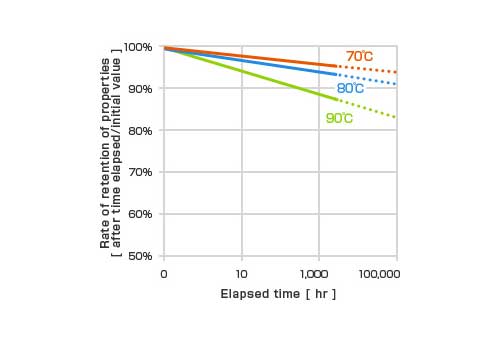
Long-Term Stability
Changes in strength with temperature as observed in the material when subjected to heating over a long period of time. An indicator of anticipated changes when used over an extended period of time. Physical properties of plastics also change over time. The higher the temperature at which the material is used, the lower the rate at which the properties are retained. A reference for design of products and components for long-term use. (also noted on the Properties page).
Application Areas

SunForce™ BE - Automotive Application
Automotive industry (exterior and interior parts, structural battery parts)
Public transportation
(airplane components, train components, railway infrastructure, electrical parts, seat parts)

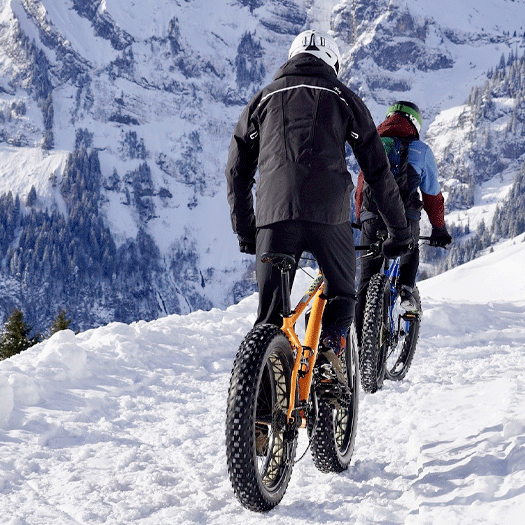
Other industries
Other industries (E-wave applications)


